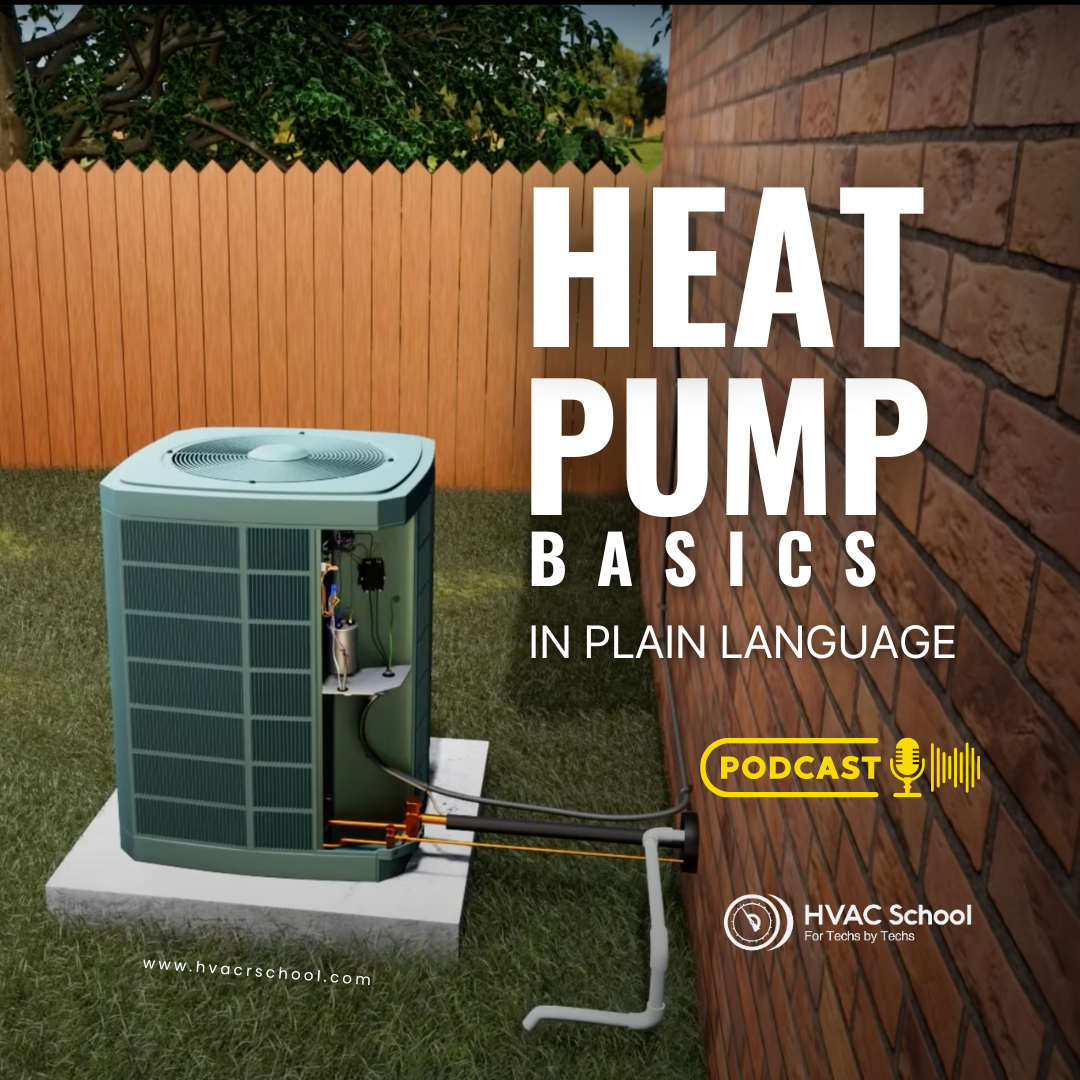Heat Pump Basics In Plain Language

In this solo podcast, Bryan provides an introduction to heat pumps, explaining the basics of how they work and key considerations in a way that is easy for anyone to understand. He starts by reviewing some core HVAC principles – that heat moves from higher temperatures to lower temperatures, the three main methods of heat transfer, and the concept that temperature is really just a measure of molecular movement.
He then explains that a heat pump works by taking heat from a place that doesn't matter, like the outdoors, and putting it where it is wanted, like inside a home. This is the opposite of an air conditioner. The only difference in the actual equipment is the addition of a reversing valve to change the direction of refrigerant flow and a defrost control board. He talks about the need to defrost the outdoor coil when ice builds up and what happens in that mode.
Some key challenges and design considerations he covers when using heat pumps include: dealing with defrost and where the melt water will go, keeping the outdoor unit free of snow, supplemental heating systems for when the unit can't keep up, increased electrical load, and factors like the climate zone, home efficiency, electricity prices, and infrastructure. He emphasizes that with good design focused around heat pumps, they can work efficiently even in cold climates.
Topics covered:
- Basics of heat transfer
- How heat pumps move heat
- Reversing valve and defrost board
- Defrost challenges
- Supplemental heat
- Sizing and design considerations
- Use in cold climates
Learn more about the 5th Annual HVACR Training Symposium at https://hvacrschool.com/Symposium24.
If you have an iPhone, subscribe to the podcast HERE, and if you have an Android phone, subscribe HERE.”
Subscribe to our YouTube channel at https://www.youtube.com/@HVACS.
Check out our handy calculators HERE or on the HVAC School Mobile App (Google Play Store or App Store).
Author:









Comments
To leave a comment, you need to log in.
Log In